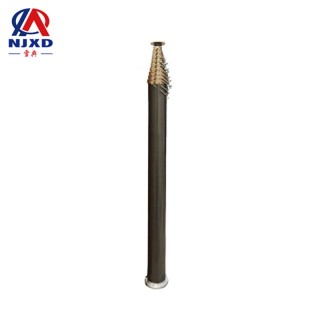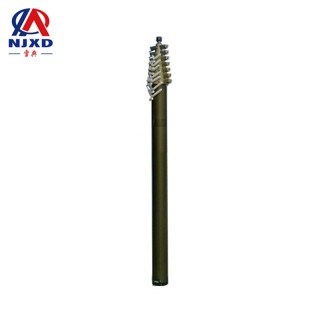NEWS
General-purpose lift rod use attention and wind-resistant structure
Time:2020-10-26 View:

Caution
1). Before operating and using the universal lifting mast (lifting bracket), carefully read the operating instructions;
2) lifting mast (lifting bracket) cannot be used as ightning rod;
3). Overload is strictly prohibited. The load of lifting mast (lifting bracket) is 10kg;
4). It is forbidden to disassemble or replace the limit switch without permission;
5). It is forbidden to use unqualified fuse or enlarge the specification of fuse core.
6). The fasteners with fixed load must be tightened before operation; The cable should be passed through the wire frame;
7). When electric work, the hand handle of universal lifting mast (lifting bracket) must be detached;
8). General-purpose lifting mast (lifting bracket) is forbidden to carry out any disassembly inspection and maintenance during the lifting process;
9). If there are abnormal phenomena such as inflexible lifting or stuck in the lifting process, stop working immediately, find out the cause and eliminate the fault before operating;
10). During manual operation, the general-purpose lifting mast (lifting bracket) must be in the power-off state. During manual operation, the lifting height cannot exceed thin red line;
11). When the custom is less than Level 8 wind, it can work normally; When the wind speed is greater than Level 8 wind, it cannot be erected or withdrawn; When the wind speed is greater than or equal to level 12 wind, should stop working;
12). In this test system, the lifting height is strictly prohibited to exceed 6 meters (display height). During the lifting process, always pay attention to the cable situation and avoid pulling or pressing the wire;
13). It is forbidden to smash the general lifting mast (lifting bracket) during the use, installation or transportation to prevent Rod body deformation;
14). During the lifting process, make sure that there is no foreign body covering over the lifting mast (lifting bracket);
15). During the lifting process, Rod body should be kept in the vertical state, and the maximum inclination angle should not be greater than 2 ° (included angle with the vertical direction);

Wind-resistant structure
1) understanding of wind resistance of lifting mast
Wind resistance is one of the important technical indicators of lifting mast products. Every customer wants to know how much wind force the mast they use can bear after carrying things, but for now, almost no one can accurately answer this question, because the wind resistance of the lifting mast is determined by the following three factors:
A material and structure of lifting mast
B height of lifting mast
C weight, volume and shape of the load
Under the condition that the above three conditions are clear, to obtain the specific wind resistance index of the lifting mast, we can use the following three ways:
(1) theoretical calculation: use finite element analysis and other methods.
(2) simulation experiment: convert different levels of wind force into wind pressure, and then use physical method (tension meter) to test.
(3) wind tunnel experiment: put the lifting mast and load in the wind tunnel to simulate the wind speed for testing.
Among the above three methods, the third method can provide a value close to the actual value. However, the cost and condition requirements of wind tunnel experiment are very high. For example, is there such a large wind tunnel for wind tunnel experiments on 18-meter-high lifting mast with loads? Can I do it? How much does it cost? They are all difficult problems. Therefore, for lifting mast manufacturers, the wind resistance index of lifting mast can only be provided by the first two methods mentioned above.
2) Calculation method of wind resistance of lifting mast
(This calculation method is the theoretical calculation formula when the lifting mast is not loaded according to the material, structure and height of the lifting mast employed by our company, for reference only.)
For example, the wind resistance of A4-270-2300-7600 lifting mast is calculated according to the reference wind speed of 100 km/h.
1. Technical conditions
1.1. The Base wind speed of lifting mast design is equal to 100km/h ≈ 28 m/s
1.2. When ▽ = 28 m/s, estimate the wind resistance D that the lifting mast can receive.
1.3. The lifting mast has 4 sections in total. The specific dimensions are shown in the table.


CATEGORY
NEWS
- Precautions for using pneumatic lifting rod
- General-purpose lift rod use attention and wind-resistant structure
- Lightning rod lift rod manufacturing steps and installation attention
- Functions and requirements of electric lifting lamp pole
- Selection of vehicle-mounted lift rod and winter protection and unfreezing